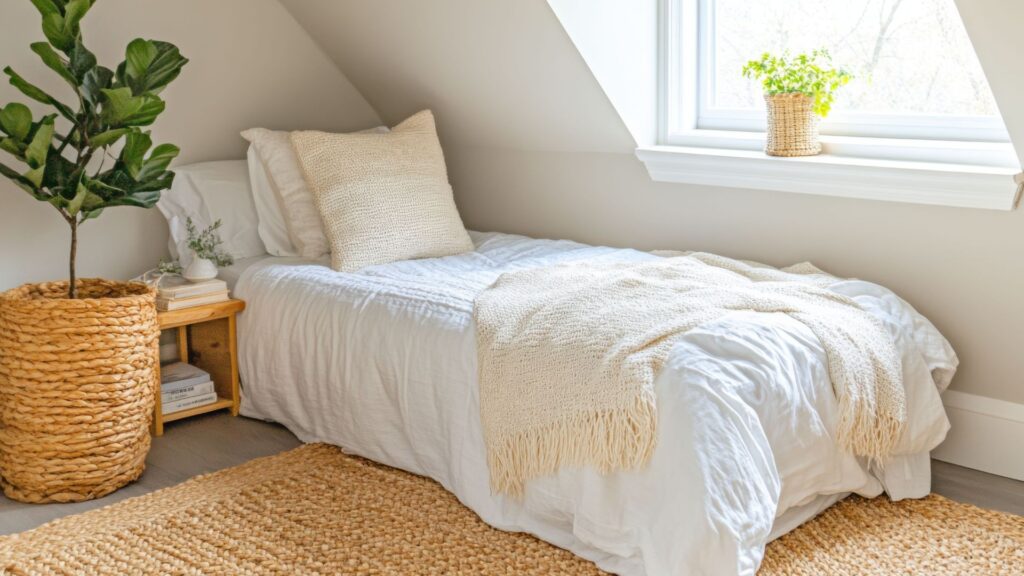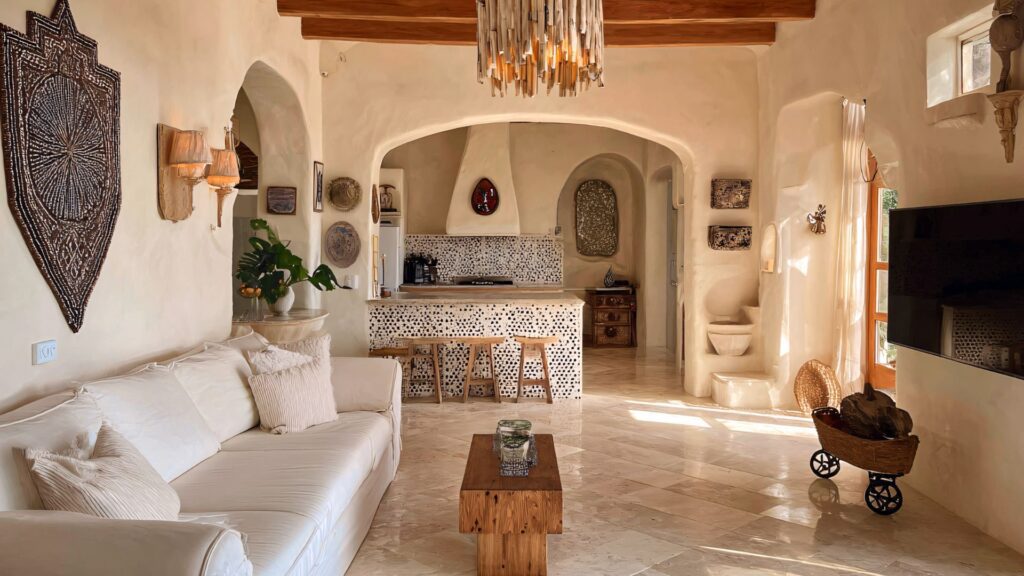Rhode Island home decor blends coastal influence, historic architecture, and efficient small-space solutions to create interiors that feel both regionally rooted and livable. This guide shows how to translate Rhode Island-style decor into practical plans for unique rooms, tight footprints, and period homes, focusing on color palettes, materials, multifunctional furniture, and local inspiration. Many homeowners struggle to balance preserving architectural character with making spaces functional; this article provides clear design moves, material swaps, and actionable checklists to bridge that gap.
You will find trend overviews, step-by-step small-space strategies, coastal palette comparisons, and local resource ideas tailored to Newport, Providence, Narragansett, and other Rhode Island settings. Each section links concept to concrete application, with EAV tables that compare palettes, furniture types, and regional styles to simplify decisions. Read on for practical styling tips that emphasize natural light, sustainable materials, and indoor-outdoor transitions that suit Rhode Island’s unique homes.
What Are the Key Rhode Island Interior Design Trends for Unique Spaces?
Rhode Island interior design trends coalesce around three regional styles—coastal charm, historic preservation, and a pared-back New England contemporary—and each emphasizes natural light, durable materials, and space-efficient layouts. These trends work because coastal proximity and a rich architectural inventory encourage using breathable textiles, weatherproof finishes, and pieces that respect original millwork and mouldings. Adopting these trends improves livability by pairing aesthetic continuity with practical upgrades like better lighting and smart storage, which make unique rooms feel larger and more functional. Understanding these regional drivers lets homeowners pick focused interventions that honor context while updating comfort and performance.
How Does Coastal Decor Influence Rhode Island Homes?
Coastal decor in Rhode Island favors light-reflecting palettes, textured natural fibers, and furniture scaled to breezy, open layouts that emphasize sightlines to water or landscape. Linen curtains, rattan chairs, and driftwood accents introduce tactile variety while durable finishes resist salt air and moisture, which matters in Narragansett and other shore communities. Coastal styling also encourages practical choices—washable slipcovers, low-maintenance flooring, and layered lighting—to keep rooms fresh and resilient in a marine climate. These materials and layout choices naturally lead to palette selection, which the table below compares for quick decision-making.
Different coastal palettes help homeowners create distinct regional moods and pair well with specific materials and finishes.
| Palette Name | Dominant Hues | Complementary Materials |
| Nautical Calm | Navy, crisp white | Painted beadboard, brass accents |
| Sandy Cove | Warm sand, soft taupe | Weathered oak, woven seagrass |
| Salt Marsh | Seafoam green, driftwood gray | Reclaimed pine, linen textiles |
This comparison highlights how palette choice directs material selection for an authentic coastal interior and informs practical sourcing decisions.
What Defines Historic Rhode Island Home Interiors?
Historic Rhode Island interiors are defined by layered architectural details—intricate mouldings, paneled doors, original fireplaces, and tall windows—that create a strong sense of place and texture within rooms. Preserving these elements while introducing modern conveniences means choosing reversible interventions like freestanding furniture, sympathetic paint palettes, and discrete HVAC or lighting upgrades that do not obscure period fabric. Carefully scaled contemporary pieces and conservation-minded finishes can update function without erasing character, and selecting materials that echo original timbers or plaster helps new additions feel cohesive. These preservation strategies lead naturally to sourcing local inspiration and contractors who understand historic fabric and adaptive reuse.
How Can You Style Small and Unique Spaces in Rhode Island Homes?

Styling small Rhode Island rooms requires intentional measurement, tailored furniture selection, and visual strategies that amplify light and storage to make spaces feel larger and more purposeful. The method works because scale-sensitive furniture and vertical storage reduce clutter and free floor area, while consistent color palettes and reflective surfaces increase perceived volume. Applying these principles lets narrow stair alcoves, attic bedrooms, and petite coastal living rooms function comfortably for modern life. Below is a compact checklist to use when planning a small-space refresh.
Use this checklist to prioritize interventions that produce the greatest functional impact in tight Rhode Island rooms.
- Measure and map the room: record door swings, window placement, and usable floor area.
- Prioritize multifunctional furniture: choose pieces that combine seating, storage, and sleeping.
- Maximize vertical storage: install open shelving, tall wardrobes, and built-in niches.
- Boost light and reflection: use light paint, mirrors, and layered lighting to expand visual space.
These prioritized moves help homeowners focus on high-impact changes first, and they naturally lead to comparing multifunctional furniture options below.
What Are Practical Small Space Decorating Ideas in Rhode Island?
Practical small-space decorating begins with a consistent palette and ends with purposeful storage, using techniques that respect historic proportions while adding contemporary function. Mirrors placed opposite windows reflect natural light common in Providence flats, and slim-profile sofas and cantilevered desks fit narrow rooms without blocking circulation. Built-in benches with storage beneath and under-stair drawers work particularly well in older homes where retrofit options are limited, offering durable solutions that maintain original sightlines. These ideas are best chosen after a measured plan to ensure scale and sightlines remain harmonious.
How to Incorporate Multifunctional Furniture in Rhode Island Interiors?
Multifunctional furniture allows unique Rhode Island rooms to serve multiple roles—guest room, home office, and living area—without cluttering limited floor space. Choosing the right multifunctional piece depends on size, function, and style compatibility with the home’s period details; for example, a low-profile sofa-bed in a historic living room can honor scale better than a bulky modern unit. The table below compares common multifunctional options by size, core function, and best-use case to guide selection.
| Furniture Type | Primary Function | Best-Use Case |
| Sofa-bed | Seating + occasional sleeping | Narrow living rooms or guest spaces |
| Storage ottoman | Seating + hidden storage | Small apartments needing hidden storage |
| Fold-down table | Dining/work surface | Compact eat-in kitchens or studios |
This comparison clarifies trade-offs when selecting pieces that must perform double duty in Rhode Island’s unique floor plans.
Which Coastal Decor Ideas Best Reflect Rhode Island’s Unique Style?

Authentic Rhode Island coastal decor combines maritime palettes, locally sourced textures, and subtle historic references to avoid cliché while reinforcing place. Coastal decor works by layering neutrals with one or two marine accents, choosing materials that patina gracefully, and integrating native plantings or seagrass to bridge the interior and exterior. Use the palette table and the practical steps below to adapt these ideas to your home’s light, architectural details, and proximity to shore. After these interior touches, consider how outdoor living and landscape-adjacent decor depend on reliable watering systems for planted containers and native beds to ensure consistent irrigation that keeps plantings healthy and low-maintenance.
Here are practical steps to bring coastal materials and plantings inside and out.
- Select a restrained palette: pair a sandy neutral base with a single marine accent.
- Layer textures: combine linen, woven seagrass, and weathered wood for depth.
- Bring native plantings indoors: use grasses and salt-tolerant specimens in planters.
- Choose finishes that age gracefully: avoid high-gloss surfaces that show wear.
These steps ensure coastal interiors age well and maintain authenticity while connecting to exterior plantings and durable finishes.
What Coastal Color Palettes Are Popular in Rhode Island?
Coastal color schemes for Rhode Island typically lean toward three families—nautical blues, sandy neutrals, and muted greens—that correspond to differing coastal moods and architectural backdrops. Nautical blues suit crisp, formal coastal cottages and pair with painted trim and brass accents, while sandy neutrals harmonize with weathered shingles and rustic textures for a relaxed beach-house feel. Muted greens and grays echo marshland views and perform well in rooms with lots of natural wood and stone, providing a subtle backdrop for layered textiles. The palette table earlier helps select the right family and suggests complementary materials tailored to the home’s setting and era.
How to Use Natural Elements for Authentic Coastal Decor in Rhode Island?
Natural elements—driftwood, woven baskets, stone, and native grasses—anchor coastal interiors by adding texture, history, and tactile contrast that synthetic materials cannot replicate. Sourcing these materials from local artisans, salvage yards, or coastal markets emphasizes regional authenticity and supports sustainable choices that feel right for Rhode Island. Preserve driftwood and other organic pieces with appropriate cleaning and sealing to prevent pests and deterioration, and choose plants suited to salt spray for outdoor planters to minimize maintenance. Applying these sourcing and care practices keeps coastal materials looking intentional and resilient in a maritime environment.
Where Can You Find Inspiration from Historic Rhode Island Home Interiors?
Rhode Island’s towns, museums, and design centers offer rich inspiration for historic interiors and adaptive reuse projects that respect local architectural lineage. Visiting Newport mansions, Providence adaptive-reuse neighborhoods, and Narragansett cottages reveals how scale, ornament, and materials differ across the state and informs choices about trim profiles, flooring, and period-appropriate finishes. When translating inspiration into a real project, homeowners should consult local showrooms and makers who understand restoration practices and sympathetic updates. Below is a compact list of places and practical resources to consult, followed by a local-resources paragraph that includes a practical services note.
- Newport mansions and public house tours for Gilded Age ornament and scale.
- Providence historic neighborhoods and adaptive-reuse projects for loft conversions.
- Regional design centers and artisan workshops that focus on period-appropriate materials.
These sources provide visual references and contacts that help homeowners match materials and proportions during renovation planning.
Local Resources: For hands-on services and outdoor installations, consider local providers and specialists who work with historic properties and landscapes. Using contractors familiar with local conditions helps ensure outdoor plantings and hardscape align with historic restoration goals and coastal durability.
What Are the Signature Features of Newport and Providence Historic Interiors?
Newport interiors often showcase Gilded Age extravagance: large parlors, decorative plaster, carved mantels, and formal circulation paths that demand proportionally scaled furnishings and layered textiles.
Providence interiors tend to reflect adaptive reuse and urban infill, where exposed brick, tall windows, and compact rooms invite loft-style furnishings and flexible lighting schemes. Echoing these signature features means matching furniture scale to room volume, choosing fabrics that respect period warmth, and inserting modern systems unobtrusively. These distinctions guide decisions about trim profiles, window treatments, and furniture scale in renovation plans.
How to Blend Modern and Historic Styles in Rhode Island Homes?
Blending modern and historic styles succeeds when designers respect scale, material weight, and proportion, choosing contemporary pieces that complement rather than compete with original fabric. Use a restrained color palette to create coherence, select transitional furniture that shares line and weight with period elements, and reserve high-contrast modern statements for secondary spaces to preserve primary rooms’ integrity. When interventions require structural changes or specialized restoration, hire conservation-minded contractors; minor DIY updates like lighting swaps or paint selections can refresh spaces while keeping character intact. Balancing restraint with selective modernization helps unique Rhode Island homes feel both preserved and livable.
This final note reiterates that outdoor-to-indoor continuity depends on infrastructure: homeowners enhancing coastal gardens or container plantings should plan irrigation alongside plant selection and hardscape choices to ensure sustainable, low-maintenance exterior rooms that support interior views and seasonal use.

